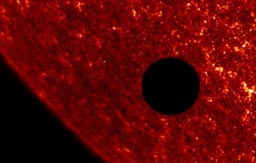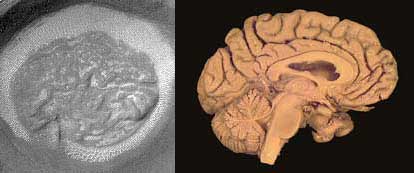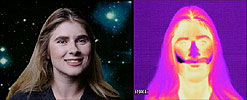
| Bad Astronomy |
|
|
|
BA Blog
|
|
Q & BA
|
|
Bulletin Board
|
| Media |
|
|
|
Bitesize Astronomy
|
|
Bad Astro Store
|
|
Mad Science
|
|
Fun Stuff
|
| Site Info |
|
|
|
Links
|
| RELATED SITES |
| - Universe Today |
| - APOD |
| - The Nine Planets |
| - Mystery Investigators |
| - Slacker Astronomy |
| - Skepticality |
Buy My Stuff

Keep Bad Astronomy close to your heart, and help make me
filthy rich. Hey, it's either this or one of those really
irritating PayPal donation buttons here.
What's New at Bad Astronomy?
Archive: 2006 | 2005 | 2004 | 2003 | 2002 | 2001 | 2000 | 1999
NEW ALERT! December 22, 2004:
I wll be on tonight's
Coast to Coast AM radio show
discussing an asteroid that made a very close shave of Earth the other day.
The segment will start off the show, so tune in tune in around 10:00 p.m.
Pacific time tonight (Wednesday), wait for about eight minutes of commercials,
and then I'll be on.
Here is a webpage with
more info on the asteroids we discussed on tonight's show.
ALERT! December 17, 2004:
I'll be a guest on SETI astronomer Seth Shostak's
"Are We Alone"
radio program on Sunday, Dec. 18, at 7:00 p.m. Pacific time. Once a month, he
talks about a skeptical topic, and we'll be chatting about some silliness someone
out there is doing. The segment is called "Brains on Vacation" so you can
get the clue about how seriously we'll be taking it.
December 7, 2004:
There has been a spate of pictures recently purporting to show meteorites hitting
the ground, or various objects like lampposts. The most recent one
was featured
on Astronomy Picture of the Day. It shows a darks streak which appears to hit a
lamppost, and a flash of light as if the lamppost were exploding upon impact.
 I took a closer look with some imaging software. I enhanced the contrast, and drew a line
down the middle of the streak, taking care not to bias myself by looking at the lamppost.
By extending the streak, I found that the streak actually misses the post, going
above it. I tried this three times and got the same result every time. The streak
misses the lamppost. Therefore, this is not a meteor hitting the lamp.
I took a closer look with some imaging software. I enhanced the contrast, and drew a line
down the middle of the streak, taking care not to bias myself by looking at the lamppost.
By extending the streak, I found that the streak actually misses the post, going
above it. I tried this three times and got the same result every time. The streak
misses the lamppost. Therefore, this is not a meteor hitting the lamp.
[Oops! I originally said here that small meteors fall straight down by the time they hit the ground. Ron Baalke informed me I was wrong; the Nakhla and Peekskill meteorites were both known to hit at an angle. So some do hit at an angle... but that still doesn't mean this streak is from a meteor!]
[Oops again! May 18, 2005: Chris Peterson of the Denver Museum of Nature and Science tells me that most meteorites do indeed fall straight down, and not at such a great angle. Ron Baalke pointed me to a paper that indicates some can, but now I am not convinced. Wind can blow a small meteorite, giving it a horizontal component, but that would have to be small compared to the much larger vertical descent velocity.]
This is being discussed on SlashDot as well, and one person came to the conclusion that it's a bug flying across the image. It's close to the camera, so it's out of focus. The camera flash lit the bug at the end of the exposure, creating the burst of light. It happens to lie coincidentally near the lamp, but has nothing to do with it. I concur; this is the most likely explanation.
We're also discussing this on my own bulletin board. Join the fun!
October 20, 2004:
 Over the next few months I am giving talks at a whole bunch
of different public venues, including a museum in Georgia,
a whole bunch of places in Australia (!), and once again
at James Randi's "Amaz!ng Meeting" in La$ Vega$.
Check out the specifics in my calendar
of upcoming events!
Over the next few months I am giving talks at a whole bunch
of different public venues, including a museum in Georgia,
a whole bunch of places in Australia (!), and once again
at James Randi's "Amaz!ng Meeting" in La$ Vega$.
Check out the specifics in my calendar
of upcoming events!
October 5, 2004:
 The editors at the magazine Scientific American have shown extraordinarily fine
taste by choosing "Bad Astronomy" as one of the five best astronomy
websites for 2004! I am honored to receive this nice award. Click on the image to see what
they had to say.
The editors at the magazine Scientific American have shown extraordinarily fine
taste by choosing "Bad Astronomy" as one of the five best astronomy
websites for 2004! I am honored to receive this nice award. Click on the image to see what
they had to say.
October 4, 2004:
SpaceShipOne Wins the X-Prize!
 Today, on the 47th anniversary of the
dawn of the space age, a new star rises into space.
Flying a second time to the lower limits of space in less than two weeks,
Burt Rutan's Scaled Composite
rocket, SpaceShipOne,
won the coveted
X-Prize, a ten million dollar
prize to the first private group that could launch a manned spaceship to an altitude
of at least 100 kilometers twice in two weeks.
Today, on the 47th anniversary of the
dawn of the space age, a new star rises into space.
Flying a second time to the lower limits of space in less than two weeks,
Burt Rutan's Scaled Composite
rocket, SpaceShipOne,
won the coveted
X-Prize, a ten million dollar
prize to the first private group that could launch a manned spaceship to an altitude
of at least 100 kilometers twice in two weeks.
It's a big day. In the past, only governments have had the ability to get manned rockets into space, but the key phrase there is "in the past". This opens up a new realm of adventure for humans, a new way to journey into the sky. This flight was sub-orbital, not fast enough to actually achieve orbit around the Earth. Certainly, an orbital flight is a huge step from this, and still a technological challenge of high order. But we must take these challenges one at a time, and this one is surely cause for celebration.
You can find out more about all this at:
September 28, 2004
 On September 29, a medium-sized asteroid named Toutatis will pass within about 1.5 million
kilometers (about 4 times the distance to the Moon) from the Earth. Predictably,
the less-scientific websites out there are screaming their virtual heads off, claiming
that Toutatis will actually impact, the government is lying, NASA is lying, I am lying,
etc. I've had a couple of emails asking why I haven't posted about this, and the answer
of course is that NASA ordered me not to. HAHA! No, the real answer is that I've been
pretty busy the past few weeks, and to be honest it sometimes gets tiring having
to tell people yet again that the sky is not falling.
On September 29, a medium-sized asteroid named Toutatis will pass within about 1.5 million
kilometers (about 4 times the distance to the Moon) from the Earth. Predictably,
the less-scientific websites out there are screaming their virtual heads off, claiming
that Toutatis will actually impact, the government is lying, NASA is lying, I am lying,
etc. I've had a couple of emails asking why I haven't posted about this, and the answer
of course is that NASA ordered me not to. HAHA! No, the real answer is that I've been
pretty busy the past few weeks, and to be honest it sometimes gets tiring having
to tell people yet again that the sky is not falling.
So I'll keep this brief:
- Toutatis will not hit the Earth.
- It will miss by a comfortable margin.
- Unless you have a decent telescope, you won't even be able to see it.
- NASA ain't the one lying.
If you want real info on this asteroid and its near-Earth pass, try these sites:
- NASA's Near Earth Object page
- Sky and Telescope magazine
- Space.com
- NEW! New images taken near closest approach actually show the parallax of Toutatis between two observatories.
August 17, 2004
Bad Astronomy has had a bit of media coverage lately!
I was interviewed for an article on space.com about
about the huge explosion in Siberia in 1908 (some
people really want to think it was an alien spaceship, but it was
actually an asteroid). Wired Magazine had an article
targeting the pseudoscientific nonsense about Mars (and there is a discussion
of the article
on my bulletin board). Lastly, just today the
Marin Independent Journal (an almost local paper for me) ran
an article interviewing me about debunking pseudoscience.
July 20, 2004
Happy anniversary Apollo 11!
35 years ago today, Neil Armstrong did something no one in the history of the Earth ever did: he placed his foot on another world. It was the culmination of the work of 400,000 people directly involved in the project, and the confluence of technology, science, politics, and both the best and worst of human nature. But it led to that one moment, a point in time at which we can divide all of history. When Armstrong's boot touched the lunar surface, the human race was no longer bound by the Earth's gravity. We can choose to be a multi-planet race, and at that time, the choice was made.
To keep up your Apollo spirits, go take a look at the organization that made it happen: NASA. Then go peruse some pictures from the lunar surface, and then roam the rich imagery at Kipp Teague's astonishing Apollo Archive.
To everyone, past, present, and future who ever dreamed of going to the Moon, and especially to those who made it happen, and will one day make it a reality again, I say: thank you.
ALERT! July 5, 2004
In honor of being on the Coast to Coast AM radio show again tonight, I have added several new pages to the site!I have decided to debunk the nonsensical astronomy from one James McCanney, a man whose theories are so wrong I have to get down to some very basic basics just to start.
I also added a page about debating pseudoscientists, or, more accurately, why I tend not to debate them.
I am right now on the Coast to Coast AM radio show. Here is the page of topics we're discussing. You can also talk about the show in real time on the Bad Astronomy Bulletin Board.
June 23, 2004
Interview alert! I'll be interviewed on the
SkyTour
radio program (broadcast out of Philadelphia) tonight at
18:10 Pacific Time (21:10 Eastern). It will be on the web as
well; you can
listen live here.
We'll be talking about Saturn, Venus, the privatization of space,
and other fun things.
June 21, 2004
 Sigh. No astronomical event can pass without someone making a weird
claim about it. The most recent: The transit of Venus causes the Yellow
River in China to flood. Guess what?
I don't think so.
Sigh. No astronomical event can pass without someone making a weird
claim about it. The most recent: The transit of Venus causes the Yellow
River in China to flood. Guess what?
I don't think so.
June 20, 2004
Happy Solstice Day! At
12:57 a.m. Greenwich time (8:57 p.m. Eastern US time) tonight
the Sun will be as far north as it gets during the year, and then starts its
slow sinking to the south.
 For people in the northern hemisphere, this marks
the Summer Solstice (what some people mistakenly call
the first day
of summer). Well, it's the summer solstice everywhere, but for
people in the southern hemisphere it's really wintertime. Confused?
Then read about
why we have seasons. And check out the US Naval Observatory
page to find out
all about time.
For people in the northern hemisphere, this marks
the Summer Solstice (what some people mistakenly call
the first day
of summer). Well, it's the summer solstice everywhere, but for
people in the southern hemisphere it's really wintertime. Confused?
Then read about
why we have seasons. And check out the US Naval Observatory
page to find out
all about time.
June 10, 2004
 The Transit of Venus came and went on June 8, and it was amazing! I was able
to see the tail end of it for a few minutes, including a view with my own eyes using a good
filter. I could just see the tiny black dot of Venus against the edge of the Sun...
something I won't see again until June 5, 2012. I will keep
the page I put together online, for reference.
I did something like 35 live television interviews for the transit, and a couple are
online:
KUSA Denver, and
MSNBC. If either of those links
doesn't work, try doing a search on "Venus" on the respective
websites. Anyway, I had a lot of fun, and I'm looking forward to the next transit,
in eight short years.
The Transit of Venus came and went on June 8, and it was amazing! I was able
to see the tail end of it for a few minutes, including a view with my own eyes using a good
filter. I could just see the tiny black dot of Venus against the edge of the Sun...
something I won't see again until June 5, 2012. I will keep
the page I put together online, for reference.
I did something like 35 live television interviews for the transit, and a couple are
online:
KUSA Denver, and
MSNBC. If either of those links
doesn't work, try doing a search on "Venus" on the respective
websites. Anyway, I had a lot of fun, and I'm looking forward to the next transit,
in eight short years.
June 2, 2004
News Flash!
 On June 8, from roughly 5:00 to 11:30 a.m. (Greenwich time), Venus will
undergo a rare transit of the Sun. That means that it will pass directly
across the Sun's disk as seen from the Earth. The last time this happened
was in 1882, so if it's visible, you should take the chance to see it. If you miss it,
you'll have to wait another 8 years. If you miss that one, well, you've
missed it for sure: the next transit isn't until 2117.
On June 8, from roughly 5:00 to 11:30 a.m. (Greenwich time), Venus will
undergo a rare transit of the Sun. That means that it will pass directly
across the Sun's disk as seen from the Earth. The last time this happened
was in 1882, so if it's visible, you should take the chance to see it. If you miss it,
you'll have to wait another 8 years. If you miss that one, well, you've
missed it for sure: the next transit isn't until 2117.
I will be doing a series of live television interviews about the transit on the 8th. I have created a webpage with information about the transit and the times I will be on the air. Check for your local listings. Note: the listings were updated on June 7, and should be complete, unless there are last-minute changes. I won't be updating the page any more, becuase there isn't time!
May 6, 2004:
Thinking about Mars...
The Mars rovers are getting a lot of attention, but we shouldn't forget the
Mars Orbiter Camera
onboard the Mars Global Surveyor. It's still returning really cool pictures...
like this one.
At the bottom of the crater in that image is what looks like... A HUMAN BRAIN
(cue creepy music). For those with slow links, I show the picture here, next to a
real human brain (not actual size).

I checked, and the "brain crater" is a quarter of the way around Mars
from "The Face", but I
don't think that will stop some goofy people from claiming it's yet another
sign of intelligence on Mars. But if there were signs of intelligence, a brain
might be a good one. :-)
May 2, 2004:
I added Sky and Telescope and Night Sky magazines
to the list of my published articles in the
In Print section. I have articles
in both issues for May 2004!
|
Bring the Universe back:
Participate in the National Dark Sky Week April 19 - 26, 2004 |
March 8, 2004:
 This has been a long, long time coming: I have put up a series of pages
debunking Richard Hoagland's
nonsense. I don't use that term loosely. For too long, Hoagland
has been making his pseudoscientific assertions about a "Face"
on Mars, NASA coverups, and other, well, nonsense. The pages I
have written will show you why, where, and how he is wrong.
This has been a long, long time coming: I have put up a series of pages
debunking Richard Hoagland's
nonsense. I don't use that term loosely. For too long, Hoagland
has been making his pseudoscientific assertions about a "Face"
on Mars, NASA coverups, and other, well, nonsense. The pages I
have written will show you why, where, and how he is wrong.
FALLOUT PART I (March 13, 2004): Hoagland discussed these pages on a recent interview on "Coast to Coast AM", and said several incorrect things. I have a transcript of the interview here, along with my comments.
FALLOUT PART II (March 15, 2004): After my pages about Mars went up, Space.com reporter Rob Roy Britt interviewed me, Hoagland, and others about this for an article which is now online at Space.com.
February 25, 2004:
ALERT!
I will be on the
"Coast to Coast AM"
radio program again on Thursday night, February 26, at 10:00 p.m. Pacific time
for an hour.
We'll be discussing the two comets that'll be gracing our skies this summer,
as well as a recent asteroid that, for a few minutes, had an orbit that looked like
it might hit the Earth (but it didn't by a long shot). Maybe I'll squeeze in a word
or two about Mars, too.
I will have a webpage written about the topics as well, to help you find more and better information than you might otherwise get. It should be ready by the time the show airs.
February 7, 2004:
As of today, this website is now being served from a faster, better
computer. I am not sure download times will be any better, but I have
upgraded my service with
my web host
Blue Virtual. I get more disk space and more bandwidth, both of which I
need for the
Bulletin Board,
which continues to grow.
January 28, 2004:
 My dear friend and fellow scientist
Michelle Thaller writes an astronomy column for
The Christian Science Monitor. She decided to write one about
my efforts here at Bad Astronomy Central, and it's a very flattering
one indeed! You can read her purple prose here. I guess I owe her
a dinner...
My dear friend and fellow scientist
Michelle Thaller writes an astronomy column for
The Christian Science Monitor. She decided to write one about
my efforts here at Bad Astronomy Central, and it's a very flattering
one indeed! You can read her purple prose here. I guess I owe her
a dinner...
January 25, 2004:
OPPORTUNITY LANDS ON MARS!
The second of two NASA rovers landed safely on Mars at about
midnight Eastern time tonight. Over the next few hours and days, it
should unfurl itself, go through tests, and then start doing what it's supposed
to do: rove. In even better news, Spirit, the first rover, now appears
to be doing much better after a few days of fitful behavior. For current
updates, go to
the JPL Mars website.
January 22, 2004: On the eve of the landing of the second NASA Mars rover, Opportunity, I am quoted briefly in "USA Today" about it. The quotation and more information can be found on the Bad Astronomy Bulletin Board.
January 14, 2004: ALERT! The President of the United States just announced an initiative that will increase our presence in space, including unmanned probes to the Moon with the eventual landing of manned missions. The goal is to establish a permanent presence on the Moon.
I am not sure how I feel about this. I would dearly love to see a bigger and better, a more ambitious space program. A moonbase would be an amazing, fantastic achievement! However, I have my doubts about the President's motivations. He has not been exactly a big supporter of science (read about his stance on creationism, for example). Also, with the amount being spent in Iraq, the timing seems odd to announce such an expensive endeavor. Certainly, the money allocated for now is not much; "seed money" as NASA Chief Sean O'Keefe called it. That is appropriate, and a good sign. But going to the Moon will cost many tens or hundreds of billions of dollars. Where will it come from?
I would guess that in 1961 or so, people asked the same thing when Kennedy announced the drive to the Moon. His motivations were political as well; beating the Soviets was a big impetus.
So I am cautious about this. Going to the Moon is a good idea, for lots of reasons. I won't belabor them here; see The Artemis Project for some of those reasons. But I do want us to go back for the right reasons this time.
I will no doubt be writing more about this as the news matures. Stay Tuned.
Archive: 2006 | 2005 | 2004 | 2003 | 2002 | 2001 | 2000 | 1999
|
|